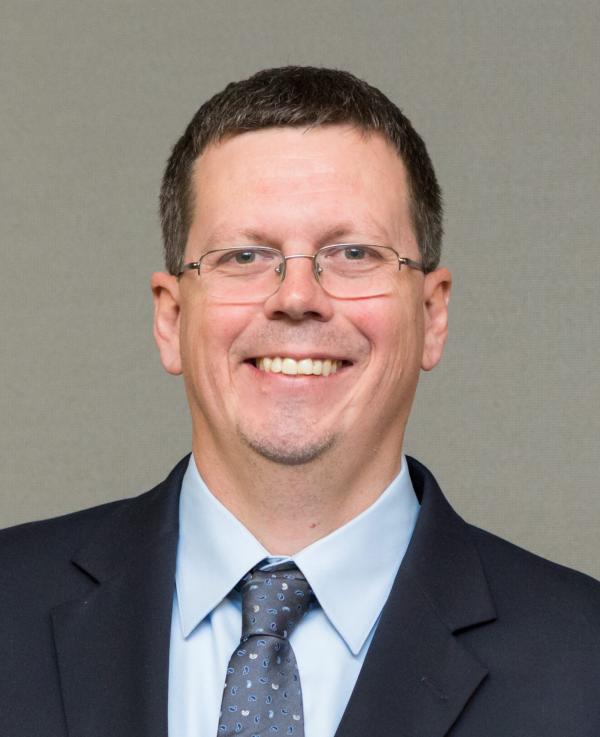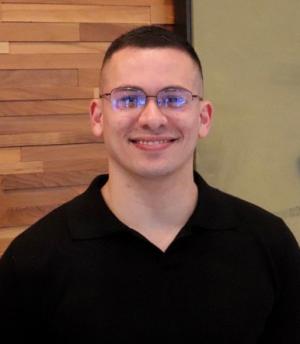Theodore Pierson Named New VRC Scientific Director
Flavivirus Pioneer Hopes to Expand Innovation, Creativity
BY GUILLERMO RAIMUNDI RODRIGUEZ

CREDIT: NIAID
Theodore Pierson is the Vaccine Research Center’s new Scientific Director
Senior Investigator Theodore Pierson, Chief of the Viral Pathogenesis Section (VPS) and the Laboratory of Viral Diseases at the National Institute of Allergy and Infectious Diseases, is excited for the next chapter at the Vaccine Research Center (VRC). He can now be found at the center as its newly appointed Scientific Director (SD), where he eagerly joins what he describes as an “exceptionally collaborative organization” and considers how to define the next series of scientific problems that they will work together to solve, building upon an impressive 20-year foundation that led the VRC to develop life-saving measures currently available to address pandemic as well as endemic public health threats.
According to Pierson, the VRC is an ideally structured organization that performs basic research in multiple areas, including virology, structural biology, immunology, and vaccine development. The VRC has unique expertise and capabilities to design, develop, manufacture, and perform first-in-human clinical trials of vaccines and antibodies against a large and diverse portfolio of pathogens. This includes well-established threats to global health, such as HIV-1, influenza, malaria, and a growing list of pathogens studied as part of the VRC’s large investment in pandemic preparedness.
“There are so many layers of scientific leadership within the center that contribute in critical ways to moving science forward,” said Pierson. He believes continued support and integration of those multiple layers of talent and expertise represents a major opportunity to foster a new era of ingenuity and discovery.
Pierson is best known for his 18 years of pioneering work studying how antibodies protect against flaviviruses. Flaviviruses are vector-borne RNA viruses that can emerge unexpectedly in human populations and cause a spectrum of potentially severe diseases including hepatitis, vascular shock syndrome, encephalitis, acute flaccid paralysis, congenital abnormalities, and fetal death (Nat Microbiol 5:796–812, 2020).
Pierson received his Ph.D. in immunology from The Johns Hopkins University School of Medicine (Baltimore) in 2001 under the tutelage of his advisor, Robert Siciliano, where he studied how infection by HIV leads to the induction of viral reservoirs and disease persistence in humans. In 2003 he completed his postdoctoral fellowship at the University of Pennsylvania (Philadelphia) in Robert Doms’ lab. There, he developed an interest in what would eventually become his current work—studying the viral immunology of flaviviruses such as the West Nile, Zika, and dengue viruses.
Science by the seashore
In an early memory, Pierson recalls being carried on the shoulders of his father along the shores of the Persian Gulf when he was 4 years old. As the high tide receded, it revealed a bounty of sea life residing on the rocks that would have otherwise remained invisible. Those experiences sparked a lifelong pursuit to understand life, first through the lens of marine biology, which would later inspire him to further appreciate all aspects of the living world. He would go on to complete his bachelor’s at Eckerd College (St. Petersburg, Florida), where he was able to study marine creatures such as manatees and pygmy sperm whales.
While at Eckerd, Pierson connected with Guy Bradley, a virologist and immunologist who introduced him to molecular biology and provided an opportunity to learn at the bench. Bradley was among the first to describe HIV virology and infection in children. “Learning from a virologist made [me] a virologist,” said Pierson. He considers that time as a pivotal period in which his interests shifted dramatically from marine biology towards viral immunology.
A multidimensional approach
Pierson remarks how his interests have significantly shifted from a reductionist way of thinking about how antibodies interact with flaviviruses to exploring more translational questions. In recent years, Pierson and others have uncovered a more complex understanding of the multidimensional mechanisms involved in how antibodies bind viruses to contribute to immunity (PLoS Pathog 4(5):e1000060, 2008; Sci Transl Med 12(547):eaaw9066, 2020).
Research surrounding viruses like dengue and Zika is an area in virology and immunology that continues to foster scientific collaboration, according to Pierson. Such NIH-wide projects resulted in multiple joint VRC-VPS projects, including studying Zika vaccine candidates (Science 354 (6309):237-240, 2016). In his new role as SD, he hopes to explore solutions to stop the spread of other emerging diseases.
Pierson is an American Academy of Microbiology Fellow and recipient of the NIH Director’s Ruth L. Kirschstein Mentoring Award, which reflects his commitment to the next generation of scientists. “I’m very proud of our science and the development of people I’ve had a chance to interact with. I’m proud of watching them grow beyond how much they believed they could,” said Pierson, adding how passionate he is about mentoring the young scientists who come through his lab. “I get to watch that humanity.”

Guillermo Raimundi Rodriguez was a postbac fellow in the lab of Leah Katzelnick at the National Institute of Allergy and Infectious Diseases, where he studied how a Zika DNA vaccine induces neutralizing antibodies in recipients with varying profiles of dengue immunity. He is currently attending his first year as a virology Ph.D. student at Harvard Medical School (Boston).
This page was last updated on Friday, September 8, 2023
